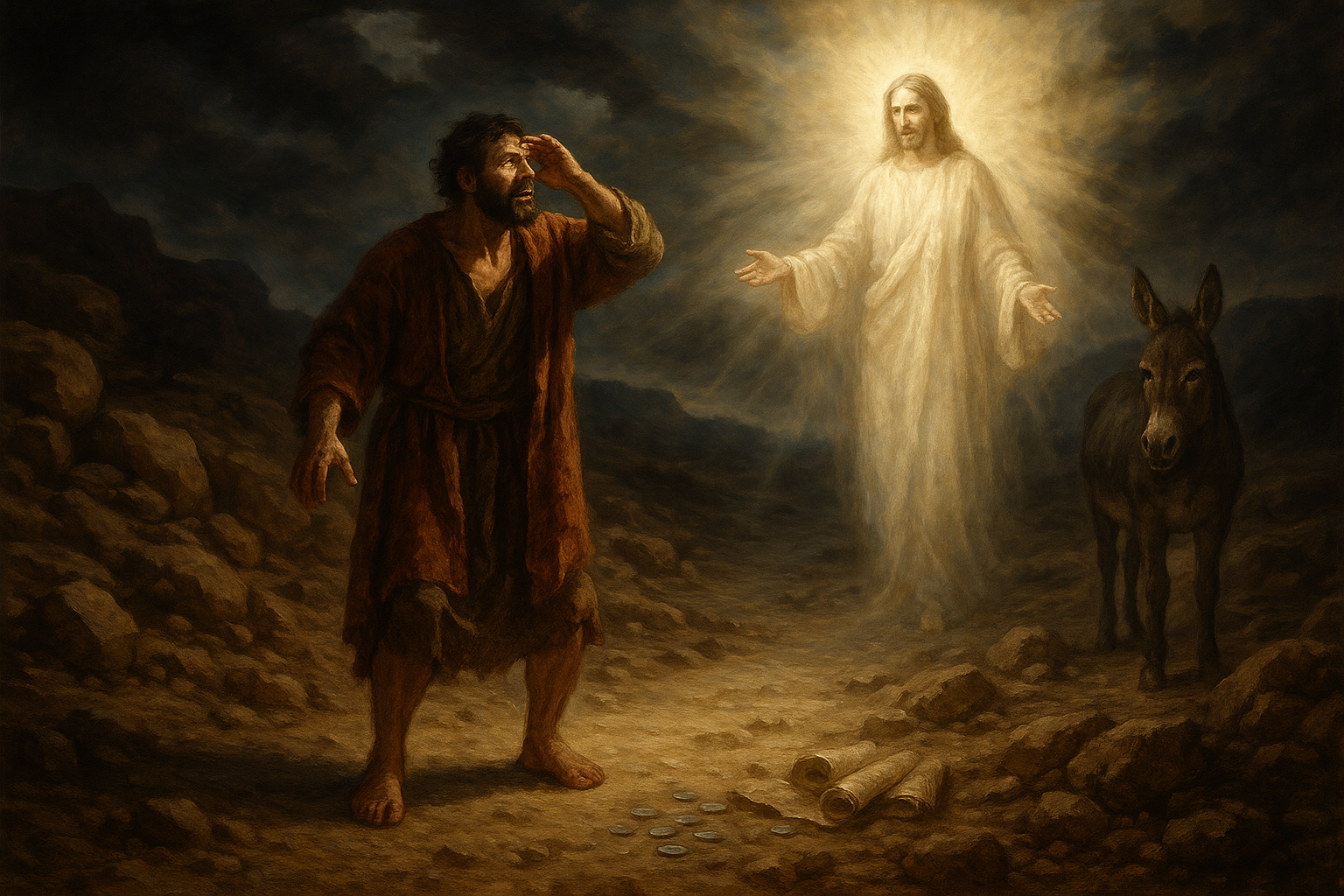The Apostle Paul is widely revered in Christian tradition as a key voice in spreading a gospel beyond Jewish boundaries. His dramatic encounter on the road to Damascus has been told and retold as a story of radical transformation and prophetic commissioning. However, a closer and more mindful literary reading of the ninth chapter of the Book of Acts raises a provocative question: Was Paul subtly cast in the narrative mold of Balaam—the prophet who was hired to curse Israel, but ended up entangled in a tale of irony and moral ambiguity?
This question invites us to rethink not just the role of Paul, but the rhetorical and intertextual strategy of the author crafting Paul’s introductory narrative. By examining narrative parallels, theological tensions, and symbolic motifs, we may discover that Paul’s conversion story contains layers of meaning that go beyond surface interpretation. Instead, it may reflect a deep, possibly ironic reworking of an older prophetic tradition, offering clues that complicate, rather than simplify, Paul’s legacy.
In the Book of Numbers, Balaam is summoned by King Balak to curse the people of Israel as they camp on the borders of Moab. On the way, Balaam is confronted by an angel of the LORD who stands in his path, invisible to the prophet but visible to his donkey. After repeated resistance, Balaam is struck by the angel’s presence and is temporarily blinded to his own purpose. He then delivers blessings over Israel instead of the intended curses, though later texts such as Revelation 2:14 condemn him for his role in leading Israel into moral compromise. Balaam becomes a paradoxical figure, in that he is both mouthpiece of God and agent of destruction, a prophet whose lips were inspired, yet whose heart was accused of betrayal.
Paul’s encounter on the Damascus road bears uncanny similarities. He is traveling with authority from the high priest, not unlike Balaam who carried a king’s commission. He is stopped by a seemingly heavenly being and is rendered blind for three days. The symbolism of blindness as “divine interruption” is deeply resonant here, mirroring not only Balaam’s physical delay but also his spiritual confusion. Paul, like Balaam, is on a journey to do God’s will—arresting followers of Jesus whom he considers heretical. Yet he is stopped, reversed, and redirected by “divine force.” This is not merely a miraculous conversion; it is a narrative reversal charged with symbolic meaning.
Where things become particularly intriguing is in Paul’s repeated defensiveness around money and motive. In Acts 20:33 and 34, Paul states, “I have coveted no man’s silver, or gold, or apparel.” In 2 Corinthians 11:8, he insists that he “robbed other churches” to serve the Corinthians without charge. And in Acts 24:26, the Roman governor Felix keeps Paul in custody, hoping that “money should have been given him.” These passages, on the surface, depict a man attempting to distinguish himself from religious profiteers. Yet from a literary and rhetorical standpoint, the very frequency of these denials does raise suspicion. After all, those who are innocent rarely feel the need to so frequently protest.
Balaam too refuses payment; at least initially. He tells Balak’s messengers, “If Balak would give me his house full of silver and gold, I cannot go beyond the word of the LORD my God” (Num. 22:18). Yet subsequent biblical traditions condemn Balaam as one who “loved the wages of unrighteousness” (2 Peter 2:15). The pattern is striking: both figures deny financial motive, both are accused of manipulation, and both operate in liminal spaces between blessing and curse, vision and violence, prophecy and peril.
If we interpret these parallels not as coincidences but as deliberate literary strategy, the Book of Acts emerges not merely as an apologetic for Paul, but as a deeply textured, multivocal text. One possible reading, especially when informed by intertextual and deconstructionist methodologies, is that Acts encodes within its Paul narrative a principle of Balaam’s story. In doing so, it subtly invites readers and critical thinkers to hold Paul’s authority in tension. Perhaps Paul’s vision is real (that realism only being literary), but that does not automatically render him above critique. Perhaps, like Balaam, Paul becomes an instrument of “divine mystery,” yet one whose impact on Israel is as disruptive as it is redemptive.
This perspective is particularly relevant when we consider Paul’s theological innovations and their consequences. His reinterpretation of Torah, his assertion of direct revelation apart from the Jerusalem apostles, and his emphasis on salvation apart from the Law would have been deeply controversial within the early Jewish Jesus movement, and even for Jesus himself. For many of Jesus’ earliest followers, Paul’s doctrine may have felt like a betrayal, or like as a curse disguised as gospel. If the author of Acts is aware of this tension (and they are), then casting Paul in a narrative frame that evokes Balaam could be a subtle but powerful literary device: a way of acknowledging Paul's profound role in shaping Christian identity, while also hinting at the costs and contradictions of that role.
In the end, whether Paul is seen as a second Balaam or a redeemed prophet depends on how we read the personality within the text. But what this inquiry reveals is that the author of Acts wasn’t really recording history; they were crafting literary and theological meaning with precision and purpose. To read Paul’s story mindfully is to enter into that complexity, to recognize that the scriptures often contain ambiguity, tension, and even critique beneath their surface. In a time of growing interest in deconstruction theology and the reevaluation of Christian origins, these questions are not merely academic, but ultimately vital to how we understand the root of our belief.



